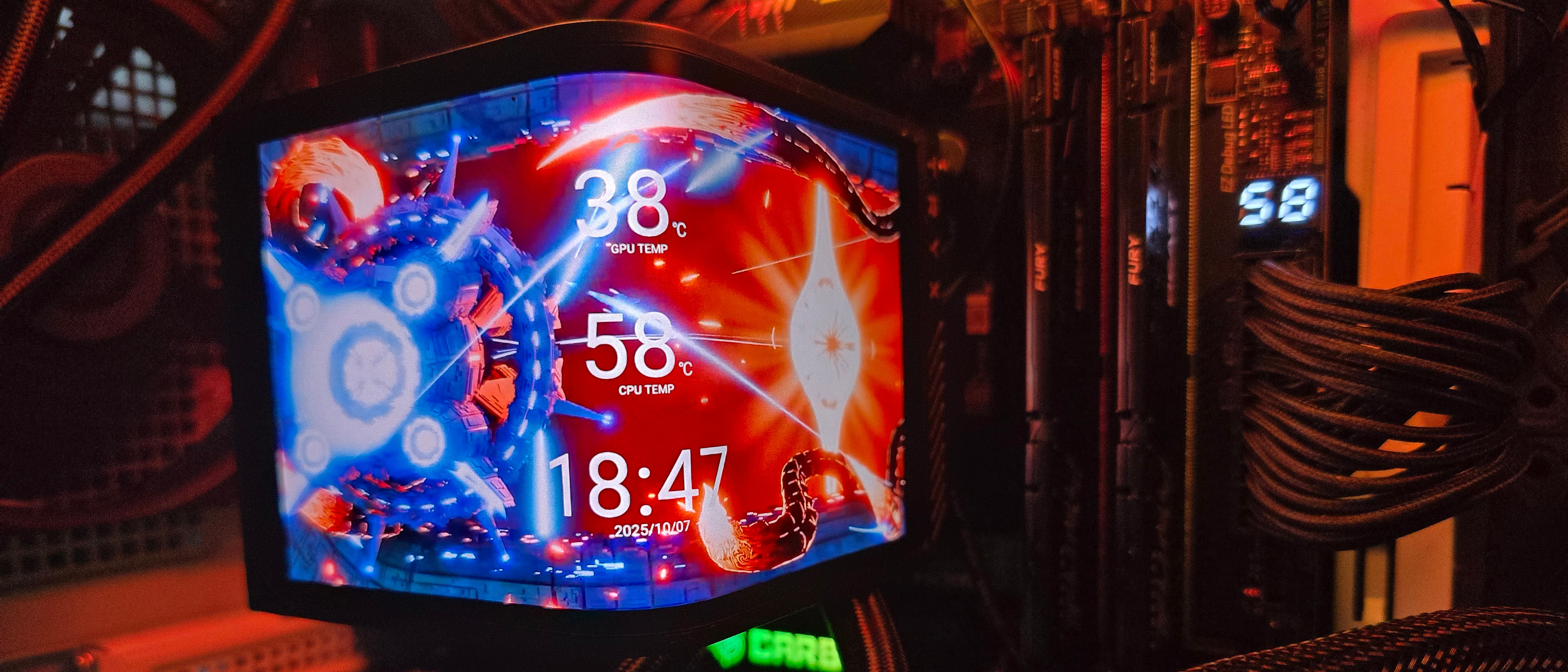Why you can trust Tom's Hardware
Today’s test bench has more limited results than normal, as our 9950X3D system has suffered an unfortunate death – as such, we’ve begun to test coolers on a system with AMD’s 9950X.
There are some differences in how these CPUs are impacted by thermal events – while the heat output of the CCDs of AMD’s 9950X3D is relatively balanced, the 9950X I’m using has one CCD which runs much hotter than the other,with a difference of over 10 degrees Celsius in some scenarios, as seen below.
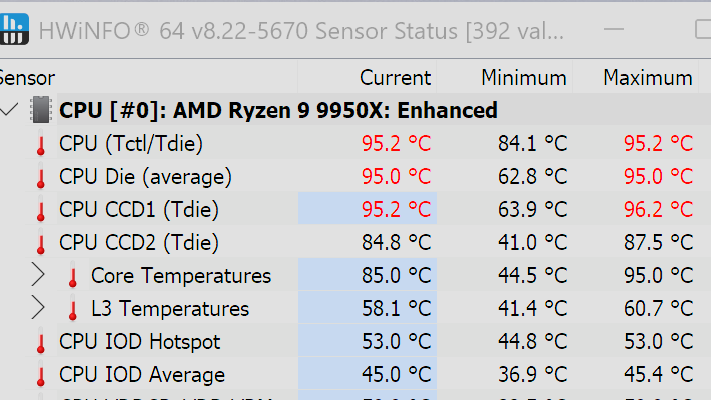
Thermalright’s Wonder Vision UB is the chief competitor to our review unit. While Thermalright is traditionally known for their value offerings, the Wonder Vision UB isn't cheap, with a MSRP of $329.99 USD. I've seen people online comparing the Wonder Vision UB to Tryx more expensive $349 Panorama 360, which we previously reviewed. But SE version has a lower price than both models at $279.99 USD.
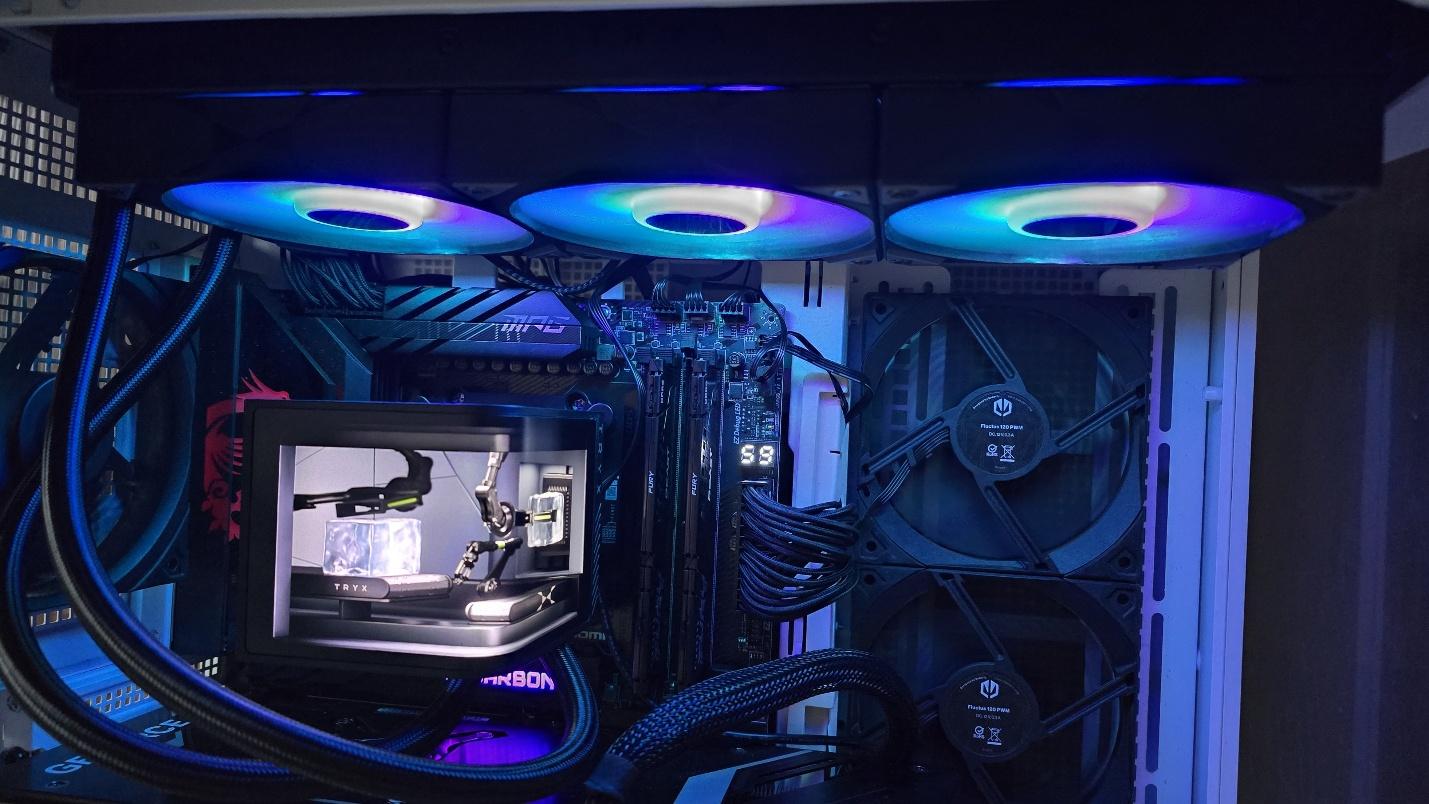
Thermalright regularly has “sales” of its products, with prices below the official MSRP. And as of this writing, I was able to find the Wonder Vision 360 UB for $205.90 USD. But even with discounted prices considered, I’m not sure I would recommend it over the Panorama SE because the Tryx model runs quieter (as we’re about to see) and doesn’t suffer from the same level of pump whine.
Maximum noise levels
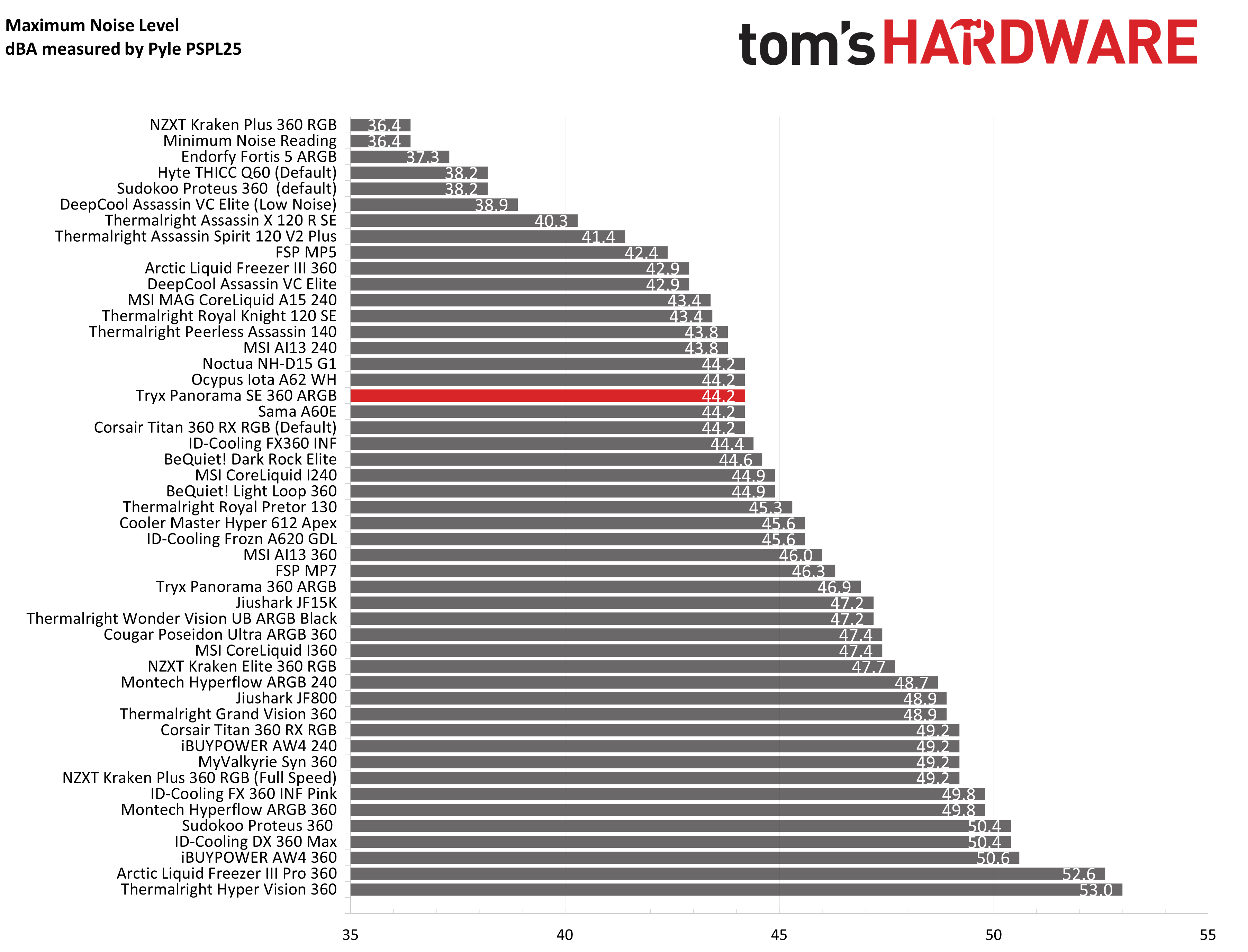
In terms of maximum volume, Tryx Panorama SE has a moderate noise level, measuring at 44.2 dBA – but in comparison to most other AIOs on the market, it is a quieter model.
150W
For this first thermal test, we’ve set the power limit to 150W.
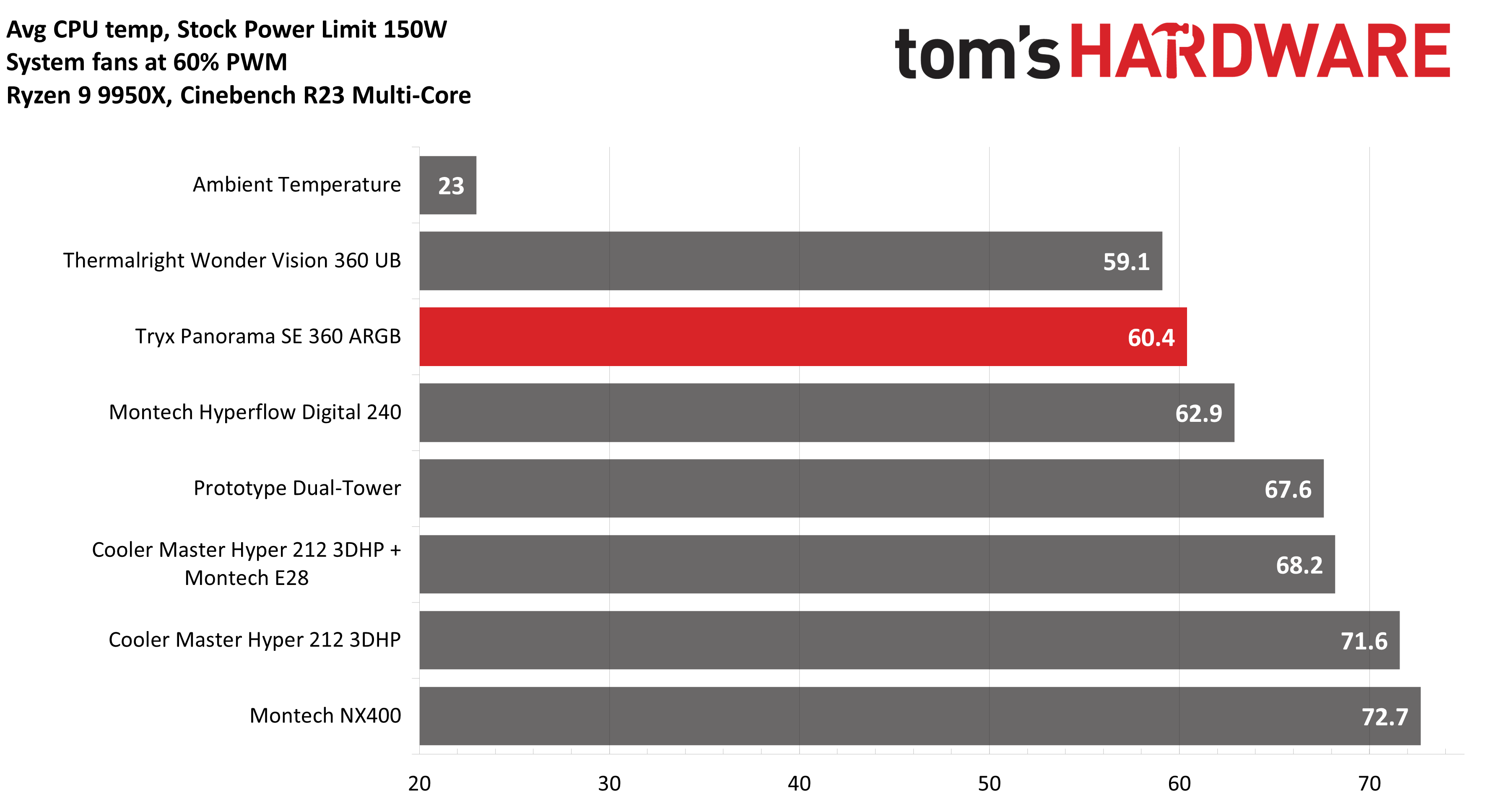
Here we’re seeing Thermalright’s Wonder Vision 360 UB take a small lead over the Panorama SE, but with temperatures of 59 and 60 C – the results are very close. More importantly, then, are the noise levels.
Get Tom's Hardware's best news and in-depth reviews, straight to your inbox.
150W Noise measurements
The 150W thermal results demonstrated above are about typical to what users might encounter in gaming scenarios, so I’ve also measured how loud the coolers run here to see how loud they get in common situations.
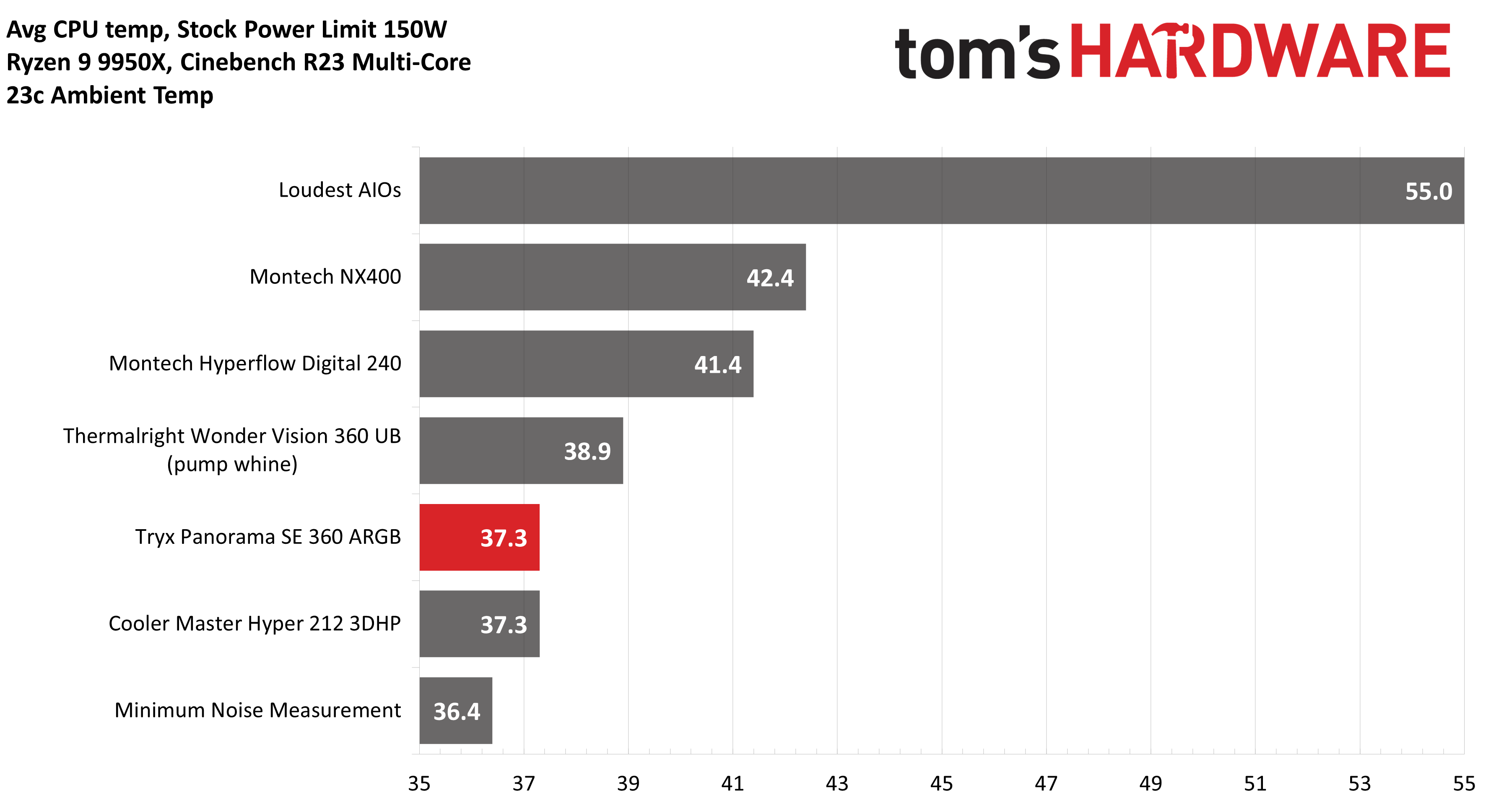
Tryx's AIO ran exceptionally quiet here, at just 37.3 dBA. Thermalright’s Wonder Vision UB was technically only a little louder at 38.9 dBA, but that dBA doesn't account for the Thermalright cooler’s particularly annoying pump whine (unless pump speed is reduced, which will reduce performance).
100W thermal results
Our next test is the least-difficult benchmark featured in this review, with a workload consuming only 100W.
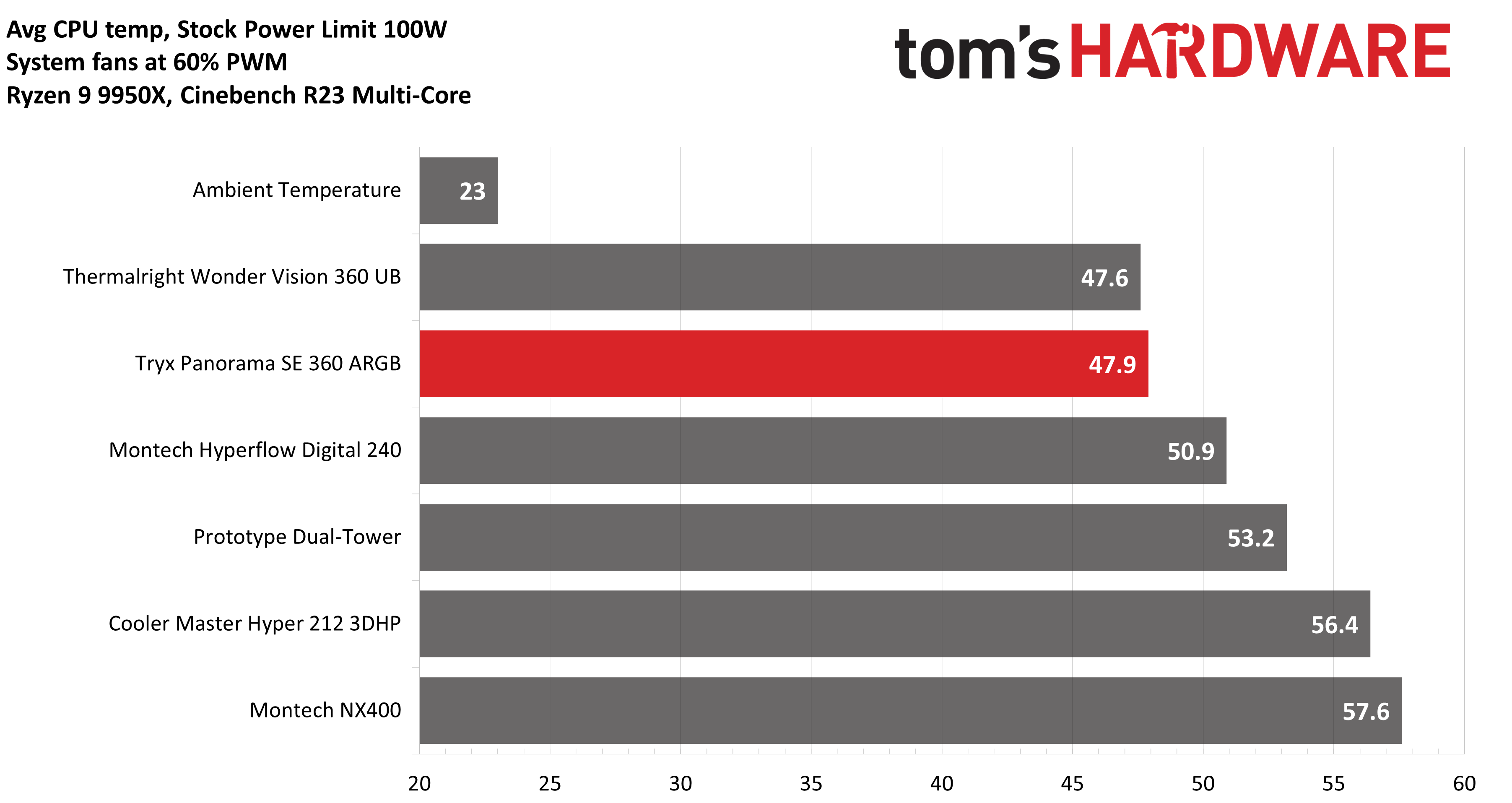
In this low-intensity workload, Tryx and Thermalright’s offerings were essentially tied with each other, and about 3 degrees C ahead of 240 mm AIOs.
200W – Stock AMD power limits
Before we get into our PBO and noise-normalized results, we’ll run one last test with the default power limits of AMD’s Ryzen 9 9950X (200W).
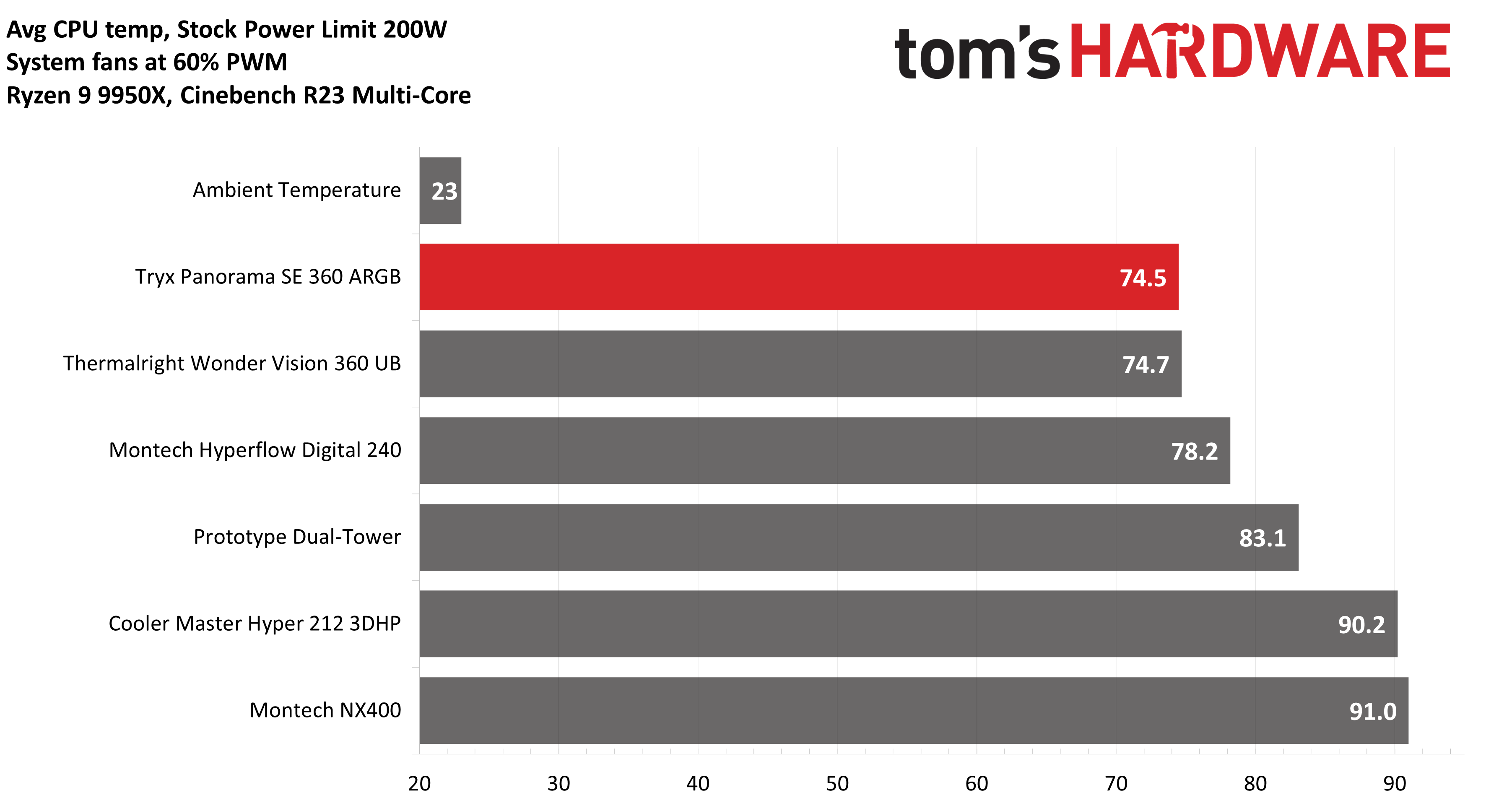
The results here at stock power limits show the same story as our previous results, with the two AIOs performing relatively similarly in terms of thermal performance.
PBO Performance
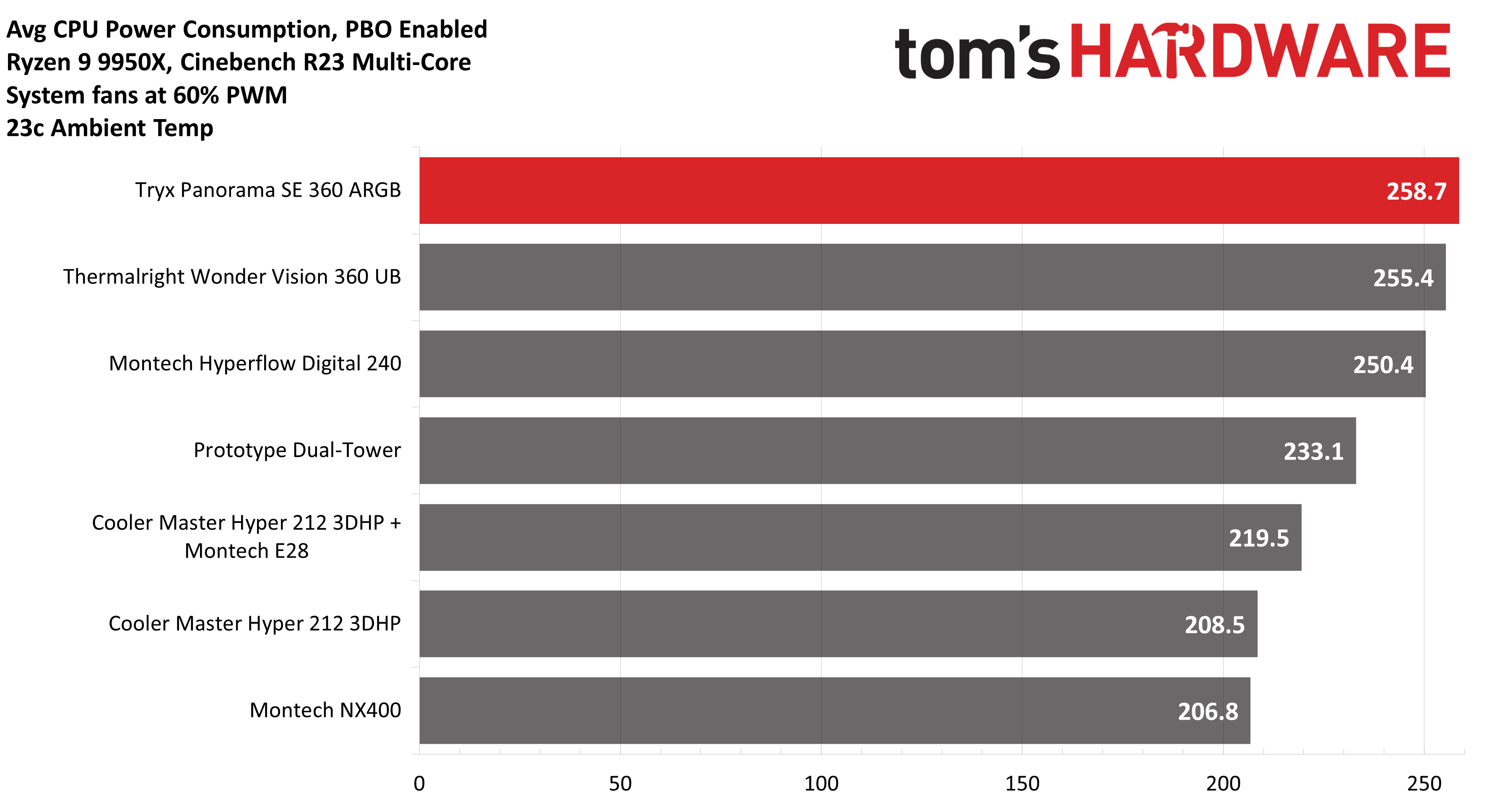
Turning on PBO allows AMD’s Ryzen 9 9950X to stretch its legs and guzzle power. In this scenario, the Tryx Panorama AIO cooled roughly 259W on average during the course of testing.
Noise-normalized testing
The above results are tests performed with the cooler tied to the default fan curve of my MSI X870E Carbon motherboard.
For this review, we have three sets of noise-normalized tests – and the Tryx Parnorama outperformed Thermalright’s Wonder Vision 360 UB in all of them. The first test was at the stock power limit, where the Panorama SE ran almost 5 C cooler than its Thermalright competition.
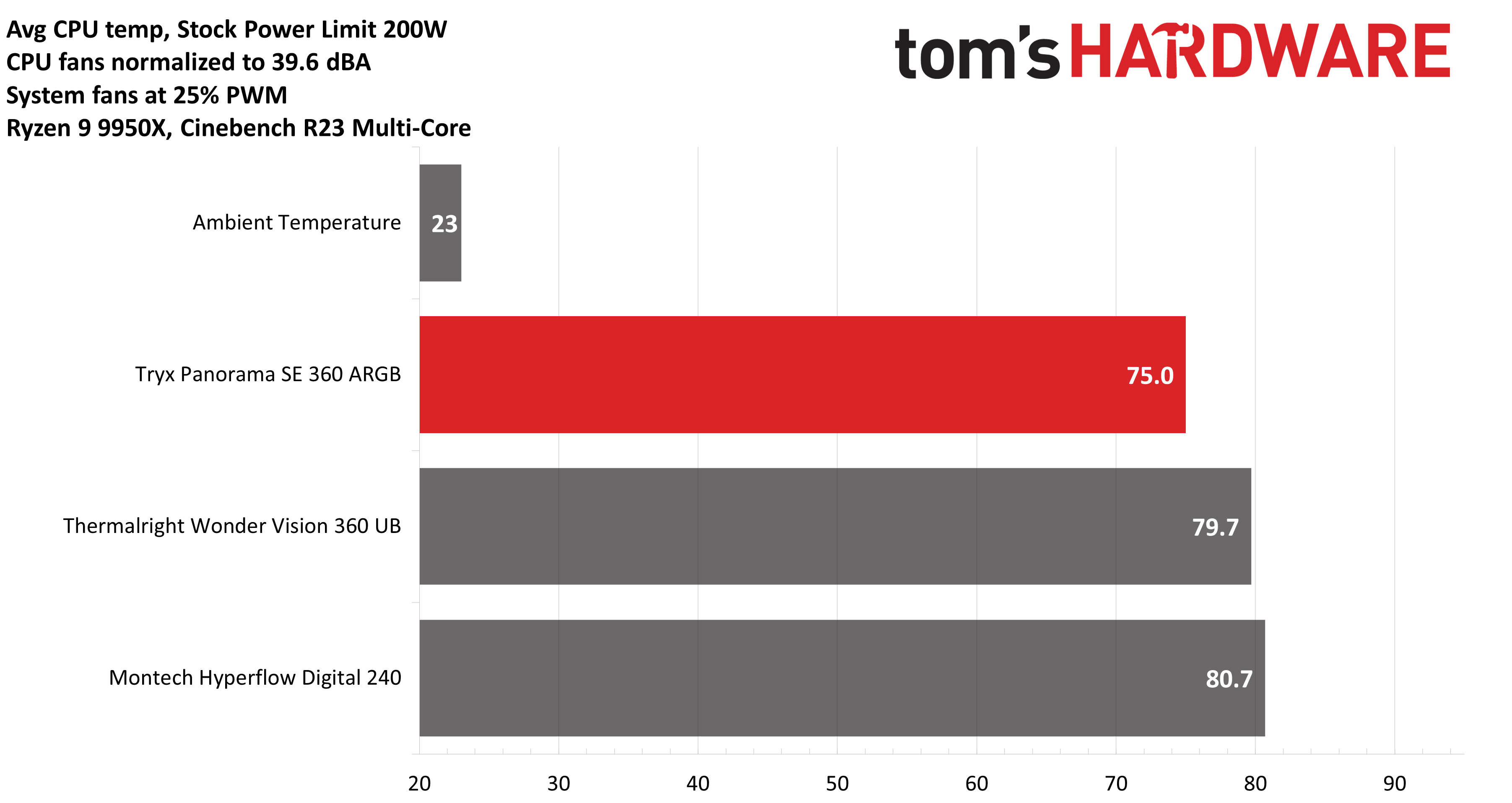
The second test is with PBO enabled to unleash maximum power consumption.
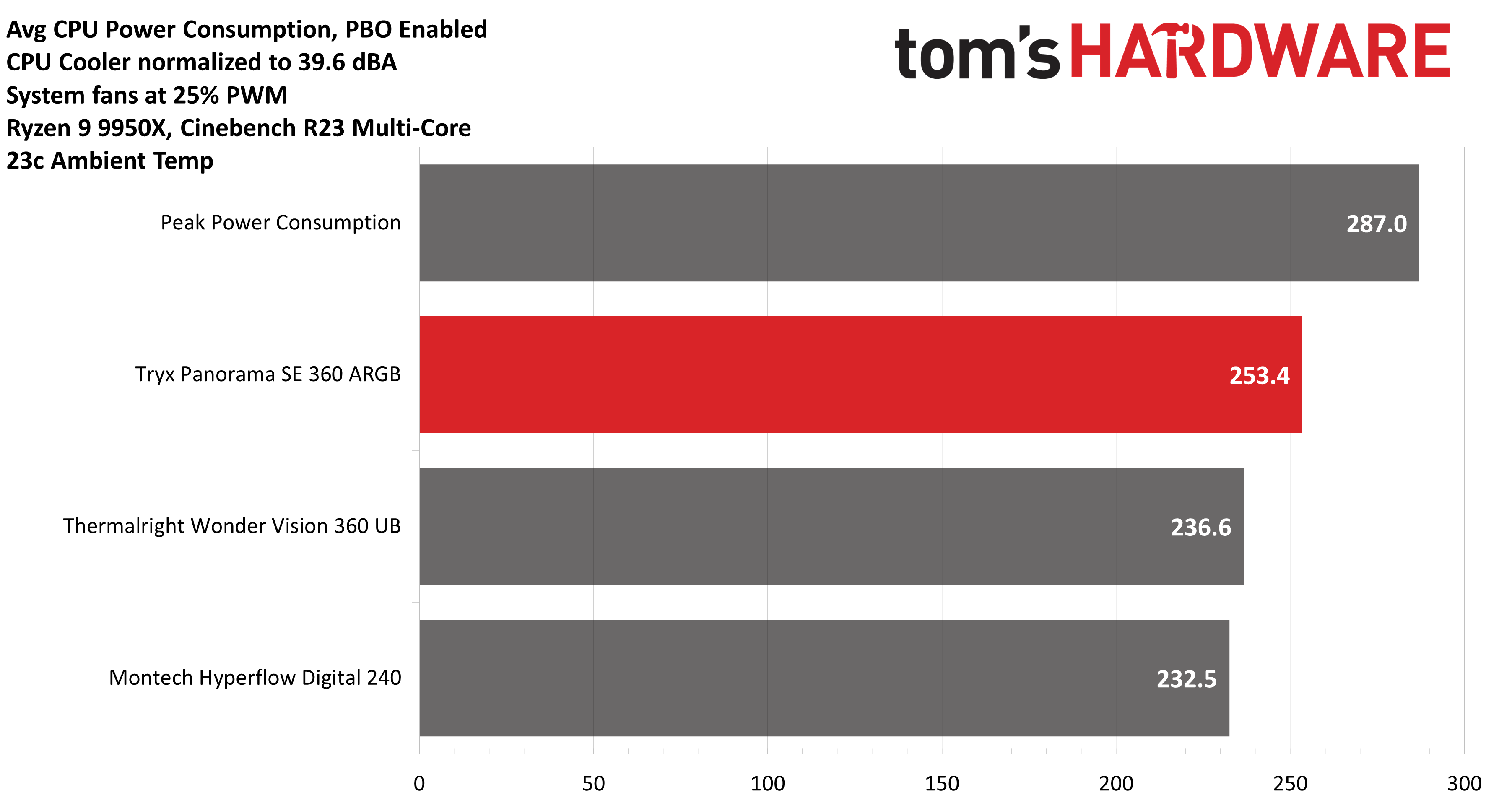
And finally, our last test is the same as above, but with the heat of a GPU added to increase the cooling difficulty. We’re using MSI’s Ventus 3X OC RTX 4070 Ti Super, which adds 295W to the workload.
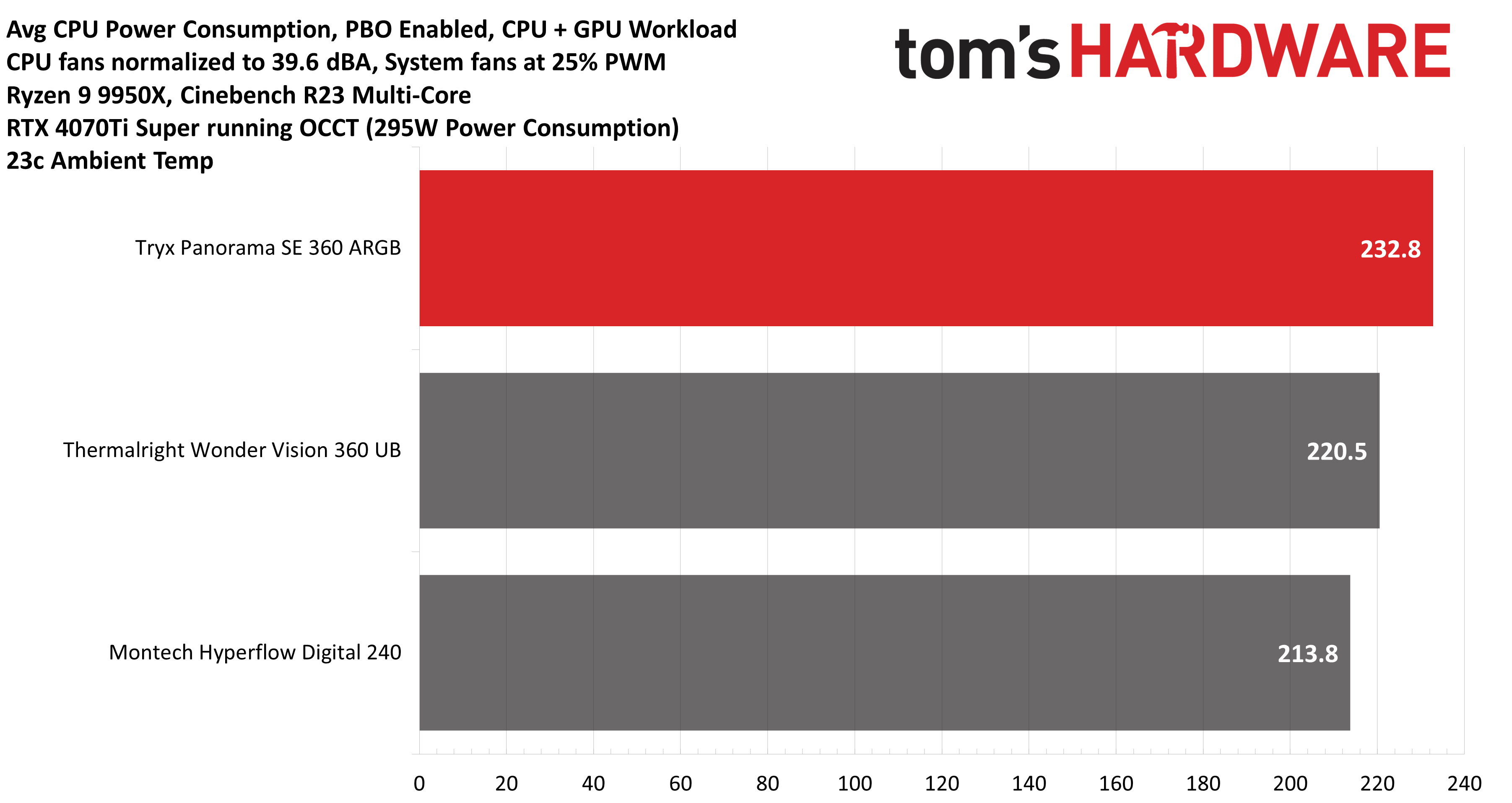
In all of these tests where dBA levels are equalized, the Tryx Panorama performed well.
Conclusion
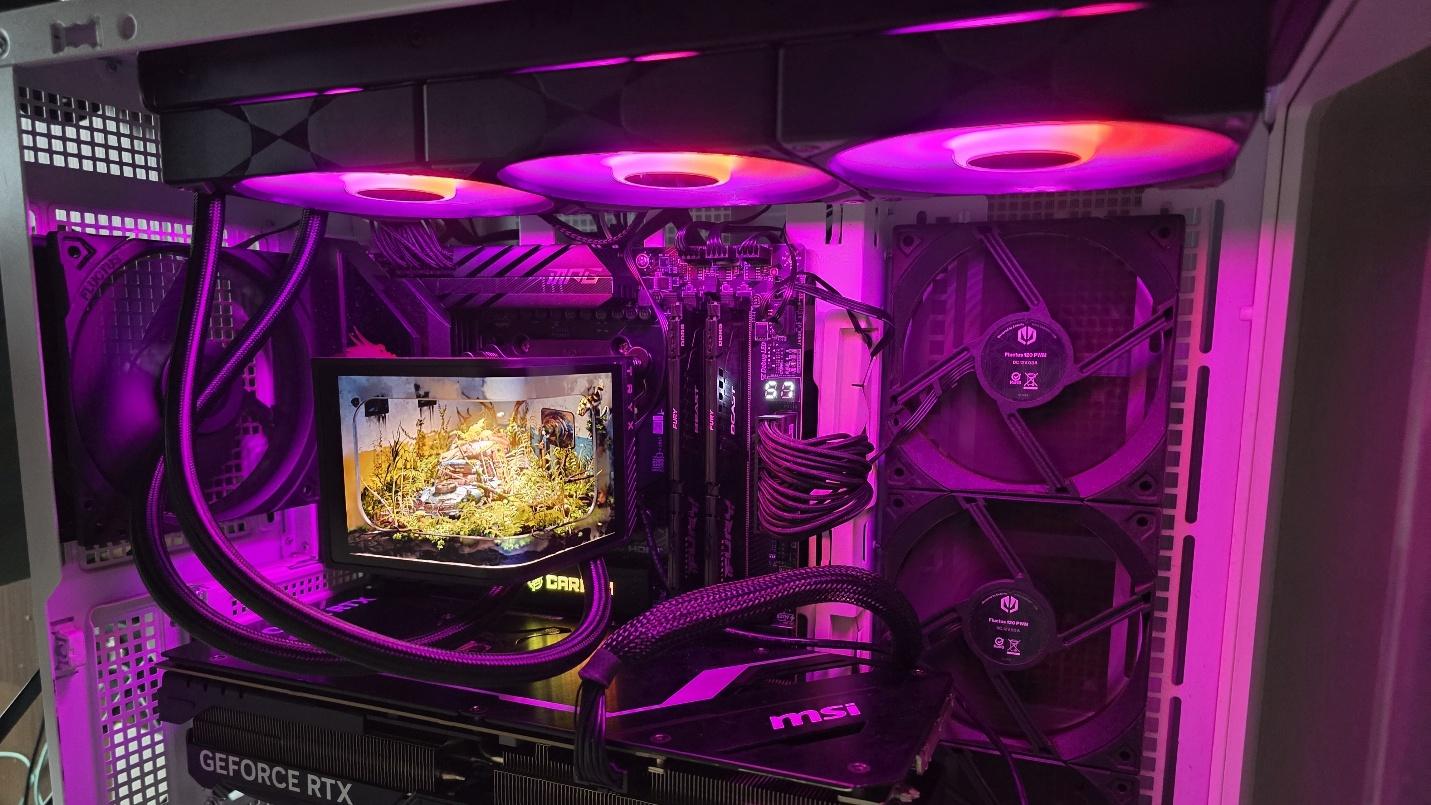
The Tryx Panorama SE ARGB is a high-end AIO with an impressive 6.7-inch AMOLED display that supports anamorphic 3D content, which appears to pop out of the screen. It performs well thermally, while also delivering low noise levels in common scenarios.
When you compare the Tryx Panorama SE to Thermalright’s Wonder Vision UB (which also has a curved screen, the Tryx model has a number of advantages. The Panorama SE has lower noise levels, a cheaper MSRP, and most importantly, it doesn’t suffer from pump whine.

Albert Thomas is a contributor for Tom’s Hardware, primarily covering CPU cooling reviews.
